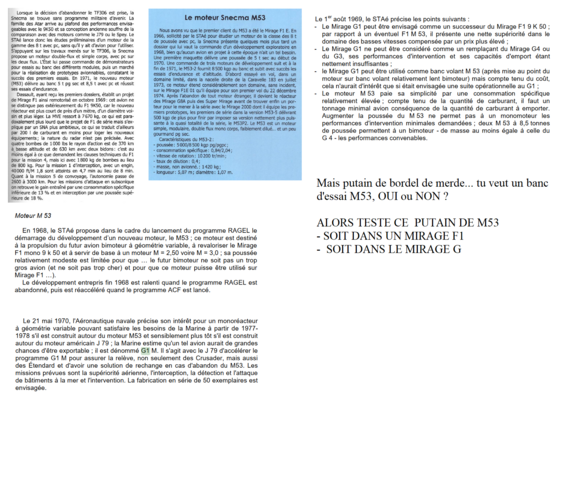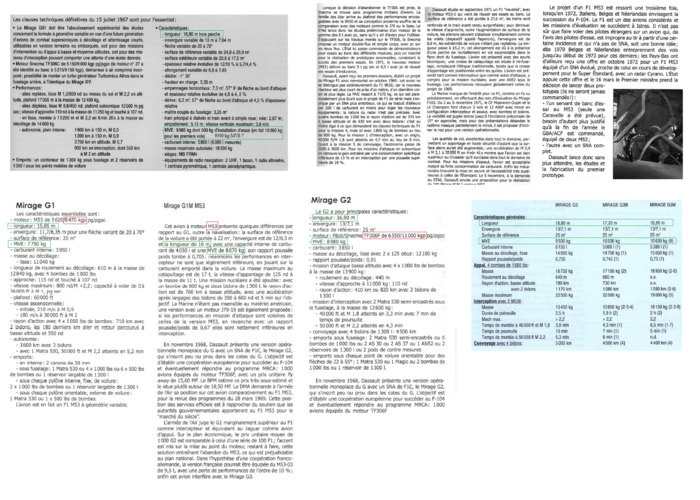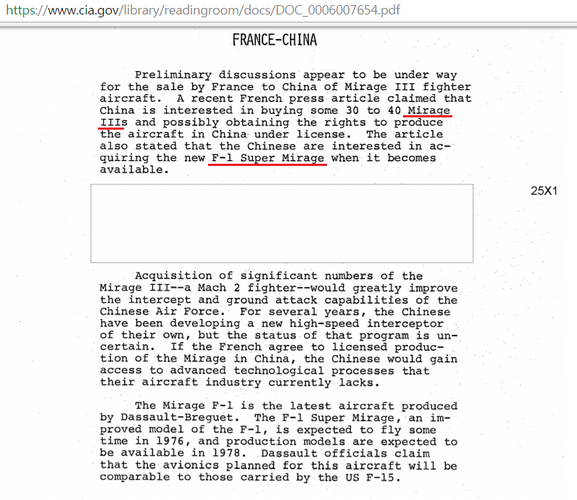All in the thread title.
1971: South Africa "Atlas" company takes a F1 licence, with a twist: they also take a M53 licence. The Armée de l'Air jumps on this and decides to change part of its ongoing F1 order (246 airframes, 160 of which are interceptors F1-Atar - into 40 to 120 F1-M53. It will be a low-end to the coming ACF.
Autumn 1973: Belgium Leburton government, noting this, moves forward and takes 40 aircraft. Greece follows, also with M53.
The Netherlands goes alone, then drags Denmark and Norway into a cut-down F-16 deal of the century (348 - 160 Belgium birds, must be 188 airframes)
1977: South Africa gets embargoed because of the Apartheid, which doesn't bothers Dassault nor the French in general, who don't want a communist Africa in their former backyard: "Françafrique" must live.
Meanwhile, in Israel... they follow the case attentively. While the Nammer will go nowhere, replaced by the (doomed) Lavi, all isn't lost there. Paper studies of "M53-Neshers", "M53-Kfirs", and "M53-Nammer" and "M53 Arie" are done: just in case; although by 1976 IDF/AF future belongs to F-15s and F-16s - with the Lavi coming on their heels in the early 80's.
In the early 80's South Africa and Israel go closer and closer - and Israel (deep into early Lavi studies) to their delight realizes they have a M53 licence.
This proves rather useful down the line...
- first, to the embargoed South Africans, who are sold M53-Kfirs in a huge deal in 1988
- secondly, to the Lavi itself: screw the PW1120, the M53 may be used as backup if Uncle Sam disasproves the Lavi (even if it pales a little, performance-wise: both are leaky turbojets)
- later on, to China...
Meanwhile, in China... the country is growing desperate for new, modern turbofans.
 en.wikipedia.org
en.wikipedia.org
With many difficulties plaguing the Spey project, the overall similar M53 is started in parallel as the WS7 - via Israel, via South Africa.
The M53 ends part of the mysterious Lavi - J10 connection...
1971: South Africa "Atlas" company takes a F1 licence, with a twist: they also take a M53 licence. The Armée de l'Air jumps on this and decides to change part of its ongoing F1 order (246 airframes, 160 of which are interceptors F1-Atar - into 40 to 120 F1-M53. It will be a low-end to the coming ACF.
Autumn 1973: Belgium Leburton government, noting this, moves forward and takes 40 aircraft. Greece follows, also with M53.
The Netherlands goes alone, then drags Denmark and Norway into a cut-down F-16 deal of the century (348 - 160 Belgium birds, must be 188 airframes)
1977: South Africa gets embargoed because of the Apartheid, which doesn't bothers Dassault nor the French in general, who don't want a communist Africa in their former backyard: "Françafrique" must live.
Meanwhile, in Israel... they follow the case attentively. While the Nammer will go nowhere, replaced by the (doomed) Lavi, all isn't lost there. Paper studies of "M53-Neshers", "M53-Kfirs", and "M53-Nammer" and "M53 Arie" are done: just in case; although by 1976 IDF/AF future belongs to F-15s and F-16s - with the Lavi coming on their heels in the early 80's.
In the early 80's South Africa and Israel go closer and closer - and Israel (deep into early Lavi studies) to their delight realizes they have a M53 licence.
This proves rather useful down the line...
- first, to the embargoed South Africans, who are sold M53-Kfirs in a huge deal in 1988
- secondly, to the Lavi itself: screw the PW1120, the M53 may be used as backup if Uncle Sam disasproves the Lavi (even if it pales a little, performance-wise: both are leaky turbojets)
- later on, to China...
Meanwhile, in China... the country is growing desperate for new, modern turbofans.
List of Chinese aircraft engines - Wikipedia
With many difficulties plaguing the Spey project, the overall similar M53 is started in parallel as the WS7 - via Israel, via South Africa.
The M53 ends part of the mysterious Lavi - J10 connection...
Last edited:



